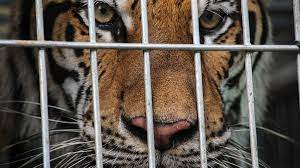Animal trafficking, also known as the illegal wildlife trade, is a multi-billion dollar industry that involves the capture, trade, and sale of wild animals and their products. From exotic pets to traditional medicines, there is a high demand for these animals and their parts, which fuels this illegal trade.
The impact of animal trafficking is devastating. It poses a significant threat to the survival of endangered species, disrupts ecosystems, and is often accompanied by cruelty and abuse towards the animals.
The illegal wildlife trade is a complex issue, and it involves various players, including poachers, smugglers, traders, and buyers. Poachers are often local individuals who hunt animals for their fur, ivory, or meat. Smugglers transport the animals across borders, often through illegal channels, while traders sell them to buyers who are often unaware of the illegality of their purchases.
The demand for animal products comes from different sources, including traditional Chinese medicine, exotic pets, and the fashion industry. For example, tiger bones are highly sought after for their supposed medicinal properties, while elephant ivory is used for carving sculptures and jewelry.
Animal trafficking has a significant impact on wildlife conservation efforts, especially for endangered species. Many species, such as rhinos and elephants, have been hunted to near extinction due to their valuable horns and tusks. The illegal trade in wildlife is also one of the major reasons why some species, such as pangolins and tigers, are critically endangered.
The effects of animal trafficking are not limited to the loss of species. It also has a broader impact on ecosystems, as some species play a vital role in the food chain and help maintain a balance in the ecosystem. The loss of even one species can have significant and long-lasting effects on the entire ecosystem.
Animal trafficking is also accompanied by cruelty and abuse towards the animals. The animals are often kept in small and cramped spaces, and their living conditions are inhumane. Many animals do not survive the journey, and those who do often suffer from injuries and diseases.
The illegal wildlife trade is a global problem that requires international cooperation and efforts from different stakeholders. Governments, NGOs, and individuals must work together to raise awareness about animal trafficking, strengthen law enforcement, and create sustainable alternatives to animal products.
To combat animal trafficking, it is essential to address the root causes of the demand for animal products. Raising awareness about the consequences of animal trafficking and educating people about sustainable alternatives to animal products is crucial. Enforcing laws and regulations that protect endangered species and punishing those who participate in illegal animal trade is also necessary.
In conclusion, animal trafficking is a cruel and devastating practice that has significant consequences for wildlife and ecosystems. To preserve endangered species and maintain a healthy environment, it is crucial to address this illegal trade and take action to stop it.
